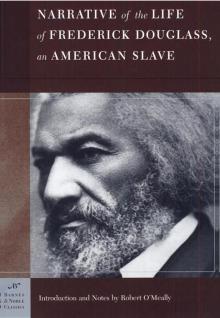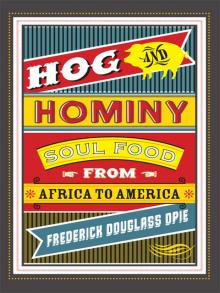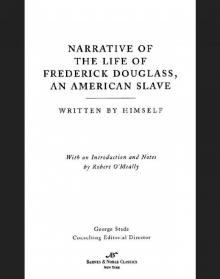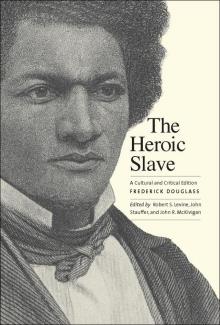- Home
- Frederick Douglass
Hog and Hominy: Soul Food From Africa to America Page 10
Hog and Hominy: Soul Food From Africa to America Read online
Page 10
Eripp struggled in getting the business off the ground, depending entirely on inexperienced help. “Once the success of the venture was assured she added to her menu, occasionally serving collard greens, pig tails, black-eyed peas, yams and hogshead,” wrote Chavez. The restaurant served hot biscuits and coffee with every meal, “and each customer was permitted as many biscuits as he or she desired.” Later she added spoon corn bread, a variety of vegetables, and salads to the menu. In 1932 she moved her place of business to 237 Lenox Avenue, just above 121st Street.36
Migrants from Windsor, North Carolina
Matilda Taylor worked as a schoolteacher in Windsor, North Carolina (Benjamin Outlaw’s hometown as well). There, she raised four children—Luesta, Maggie, Bertha, and Dick—apparently alone. Bertha was the first to leave Windsor, migrating to Ossining, New York, in Westchester County, where she found a job working as a domestic doing cooking and cleaning for a wealthy white family. In 1930 Westchester County, the nation’s “premier suburban region,” had an African American population of 23,000.37
Luesta was the next to go, originally leaving Windsor to earn a teacher’s certificate at North Carolina Normal School for teachers. She dropped out of school, eloped, and migrated with her husband to Philadelphia. Apparently Bertha sent word that she had jobs lined up for her sisters in Ossining. “My mother [Luesta Duers],” recalled Margaret Opie, “was the upstairs maid, and my aunt Bertha was downstairs, they all did domestic work. And one of the things you will find is that a lot of the women, especially black women, those were the jobs available to them.” Luesta “did laundry, there was always a way in which they took the skill they had and marketed it.”
The oldest child, Maggie, born in 1903, was by all accounts the best cook in the family (after her mother), renowned for making an abundance of great food out of scraps, handouts, and leftovers, all assembled in a black cast-iron skillet. Maggie married Charlie White of Windsor. The couple had a daughter named Katie and three boys named Booker, Charlie, and Horace before they split and Charlie began a second family with another woman in Windsor. Maggie, following the lead of her sisters Bertha and Luesta, migrated with her children to Ossining.
Eventually she found a good job working as a cook for a white family in Ossining named the Brants.38 She rented a flat in the Italian immigrant section of the village. Katie, Maggie’s only daughter and one of our family’s best cooks, remembered her neighbors well. “You know I learned how to cook using Italian” seasonings like sage because the neighbors “used to give us food.” Merchants “would give mama different things you know, meat leftover that they didn’t sell.”39
Migrants from Cloverdale, Virginia
Ella (Christopher) Barnett was born in the rural farming community of Cloverdale, Virginia, in 1915. When she was thirteen, she worked for a white women and her husband as a domestic in Cloverdale, and “they were as nasty as they could be to colored people. . . colored people had a hard time.”40
Her largely absentee father, Claven Christopher, was one of the earliest members of her family to head north from Cloverdale in search of opportunity. “He worked in New Jersey but lived in Cloverdale, and he came home maybe once every two or three years,” said Barnett. Claven Christopher worked as a cook in the railroad camps of the black workers who laid track in New Jersey and New York, including through the Tarrytowns. Apparently, railroad contractors laying track up north hired southern-born African Americans, paying for their passage north and providing wages in addition to room and board in work camps as far north as New York.41
Barnett’s father was the best cook she knew of as a child growing up in Cloverdale. “He was one of the best cooks in the world. He was such a good cook that people named him Cook.” Up north, people did not know him as Claven Christopher but instead by the name Cook. No one where he worked in New Jersey knew him as Christopher, says Barnett, “but all you had to say was Cook, and everybody knew him.”42
Washington “Wash” Opia (a name later changed to Opie by a local official during a property transaction) came to Cloverdale, Virginia, as a railroad camp cook. He was a West Indian migrant that decided to purchase land and start a farm in Cloverdale after marrying Mollie Cox in 1898. She died, and he remarried, taking up with Fannie Christopher in 1913. She was an unwed mother with two boys to raise: Fred, born in 1908, and Neal, born in 1910. The couple had several additional children together. Lucy Demmie married Fred Opie. Barnett’s sister, Martha, married Lucy’s brother, Horace Demmie.43
Lucy Opie migrated from Cloverdale to North Tarrytown in the late 1920s or the early 1930s. In North Tarrytown, the majority of the southern-born migrants came from Virginia, the remainder from North Carolina, South Carolina, Florida, Georgia, and Maryland, in descending numbers. Most of them rented homes, creating a black enclave in the Valley Street section of town. They worked predominately at private homes for white residents as cooks, live-in domestic servants, chauffeurs, and laundresses. Others worked as laborers, truck drivers, and factory workers.44
FIGURE 4.2 Left, Fred Opie, Sr.; right, Jane Dimmie and Lucy Dimmie Opie.
All indications are that the first job Fred Opie, Sr., had in New York was as a heavy equipment operator with the construction crew that built the Rockefeller estate at Pocantico Hills. “I think that when John D. was developing Pocantico Hills. . . in the 1890s and early 1900s a lot of migrant workers from the South, black migrant workers from the South, came up to work primarily for the Rockefellers. Because there was a lot of manual labor that had be done,” said Fred Opie, Jr. He added, “because until the war [World War II], General Motors did not hire black people.”45 As a result, most of the male migrants from the South in the Tarrytowns found employment at Pocantico Hills during the almost seventy-five years it took to build the miles of stone walls and dozen or more stone barns and houses and the mansion. Once the construction was completed, black southern women staffed the kitchens and cooked food for the Rockefellers and their guests.46
Lucy Opie did domestic work, particularly cooking. A superb cook, she prepared traditional southern dishes. What was unique about her cooking, according to her daughter, Dorothy, was that “the first ingredient she put in was a piece of love, stirred it up. Then she put in the ingredients, salt and pepper and whatever.” In addition, as a southerner, she had the habit of cooking with a lot of lard and seasoning her vegetables with pork. She also continued the southern tradition of canning produce. “My mother canned everything, she did a lot of canning, she worked very hard.”47
Lucy Opie was also an excellent baker, often preparing biscuits; hot cross buns; cakes; mincemeat, rhubarb, sweet potato, and cherry pies; and peach cobbler. Many of these baked goods were made from the fruits and vegetables grown in the family garden her husband kept. She and her husband also operated a storefront bakery in North Tarrytown until the Depression put them out of business. According to her son Fred Opie, Jr., “in Tarrytown there were not too many black businesses” like the one his parents operated. “Most of the black businesses were moving businesses, moving companies.”48
In time, Lucy Opie sent for her brother Horace, who came to New York with his wife, Martha. After Martha arrived, she sent for her cousin, Ella Barnett, and her other sisters down in Virginia. Barnett explains, “My sister [Martha] got married and her husband’s sisters were up here. And when she married their brother they brought her and her husband up here. Then when she got up here she brought her family up here, one by one.” Barnett was thirteen when she migrated to New York.49
Nora Burns White
Nora Burns White migrated from Blaney, South Carolina, to New York City with two other girls in 1942. She was fourteen. White recalls, “My mother was a very smart person. But how she let me come to New York with two other girls” the same age continues to perplex her daughter. One of the girls lived in the Bronx, and she was down in South Carolina visiting her cousin. “Luis was going back with Mary and I said to my mama ‘Could I go?’ and for some reason or another sh
e said ‘yes.’” White’s older sister, Luella, had already migrated to Harlem the summer before. But, “Luella did not know that I was coming to New York.” 50
Her mother packed a box full of “fried chicken, bread, and cake” to eat during the train ride, “enough to last us all the way to New York. I think it took us something like twenty-four hours to get there.” She adds, “On the train then, there wasn’t any place to eat on the train because it was segregated.” Jim crow laws restricted black passengers to the coach car, and most of the other African Americans sitting there with the three young girls had similar boxes filled with food. “And we were in the coach, right there next to the [coal-burning] engine. And by the time we got to New York, everybody was so dirty and greasy.”
They arrived at Penn Station without a clue as to how to exit the station, never mind how to get to Luella’s apartment building. A boy just a little older than they asked them if they were lost and showed them how to get the A train up to 125th Street in Harlem where her sister rented a room. At this point in the interview, White yet again wondered, “What went through my mother’s mind to let me go to New York?” Yet her mother likely realized that White would have better opportunities in New York than as the daughter of a single parent who tenant farmed in South Carolina.
Georgia, another roomer in the same building, originally from Roanoke, Virginia, worked as a cook for a private home on Amsterdam Avenue in Manhattan near Columbia University. She asked her employer if she was interested in hiring someone to help out in the kitchen. “She said yes and hired me, so of course I put my age up to twenty-one. . . . I think she paid me fifteen or twenty dollars a week,” recalled White. She learned most of her cooking skills working with Georgia on that first job.
Trained and inspired by her mentor, Georgia, at eighteen Nora White left her sister and the Harlem rooming house on 121st Street for upstate New York, where she worked as a cook for the family of a Dr. Kensdale, a scientist who worked on the Manhattan Project. When she questioned whether she was qualified for the job, she reports, “Georgia said to me, ‘Oh no you can do it. Get yourself a cookbook, and add a little something, or take away a little something so that it taste right.’” She remembers learning on the job, like the time the Kensdale family requested eggplant Parmesan for dinner. White recalled thinking, “Oh my Lord! What am I going to do?!” So she went to the cookbook, found the recipe for eggplant Parmesan, and went ahead and fixed the meal; it turned out very well. She learned how to make a host of dishes using a similar tactic: the help of a cookbook and taste buds well versed in the southern African American culinary tradition of how to make something taste just right.51
Understanding what African Americans in the South used to make their food taste right is the key to explaining the uniqueness of down-home cuisine. In African American culture, seasoning was an art form passed down through oral tradition. It could only be learned through a lengthy apprenticeship like the one Nora White had with her mentor Georgia, an experienced cook, followed by years of practice. Ultimately, it becomes instinctive.52
African American children, mostly female, began their cooking apprenticeships at a young age, closely observing older cooks within their family and extended family. Over time, adults would assign chores of ever-increasing difficulty to acclimate the child to the art of cooking. “Because our recipes were seldom written down, we had to rely on momma’s and grandma’s experience and what we could learn by watching as they went about their chores in the kitchen,” writes one author of a soul food cookbook. “The advantage of learning at grandmother’s elbow is discovering things which are not found in any book.” You learn how to season and cook food by being there when momma does it. Then one day somebody finally turns to you and tells you to make something and you do it. “For this reason the soul food cook usually knows instinctively how much salt to add, when the grease in the pan is hot enough, and how long before it’s time to open the oven.”53
South Carolinian Alexander Smalls learned how to cook while serving as his mother’s “chief helper” in the kitchen on Saturday nights and Sunday mornings. “My mother and I would begin cooking about eight in the evening if there were pies or cakes or yeast rolls to be made. . . . By Sunday morning, breakfast and dinner were both happening at once—roast roasting, bacon frying, grits bubbling, potatoes boiling—so the kitchen was already a profusion of smells” by the time the macaroni and cheese and fried chicken were started. In addition to apprenticing in his mother’s kitchen, Smalls also learned the art of seasoning and cooking from his grandfather, who was a great cook: from him, he learned how to season and cook catfish, “red-eye vinegar gravy with sage sausage,” and “skillet rice with fresh parsley.”54
Seasoning was learned by tasting other people’s food and inquiring what ingredients and cooking techniques they used. It was during informal “kitchen conversations” that people exchanged family secrets for cooking fried chicken and other dishes. Some of the secrets were as simple as the use of a seemingly unlikely seasoning or marinade. For instance, one cook’s mother marinated her chicken in peanut butter thinned with milk the night before frying it. In the morning, she would pat the chicken dry and fry it in seasoned cooking oil. Another secret was in the cooking fat. “Momma [saved] not only all bacon drippings, but sausage [drippings], too.” If there wasn’t enough to fry all the chicken, then she flavored her frying oil with it, which gave “an extra-special tastiness to the meat.”55
Various amounts of spices and herbs, particularly salt and pepper, crushed red pepper, bay leaf, sage, and sugar, are partly responsible for the “down-home” flavor associated with southern African American cuisine. African American seasoning also depends on several fresh vegetables, including chopped scallions and /or onions and garlic. Apple cider vinegar and Worcestershire and Tabasco sauces are also staples in seasoning southern dishes. As mentioned earlier, the final component that makes African American food unique is the addition of pork flavor into dishes. Collards, kale, and turnip greens are seasoned with pieces of pork; fish, and chicken and are deep-fried in cooking oil made of or flavored with pork-based drippings (oil and sediment left in a pan after cooking bacon or sausage). Perhaps what’s most southern about southern food is the inclusion of pork in some shape or fashion in just about every dish.56
Nettie C. Banks
Nora White eventually became a good friend and catering partner with southern migrant Nettie C. Banks. Banks was born in 1921 in the farming community of Samos, Virginia, in Middlesex County. Traveling to Baltimore to visit her sister and mother, who were working there that summer, she ended up staying. All three women earned money working as domestics. “In the South you kind of migrated to wherever you had relatives. My mother had a brother in Baltimore who had a big house.”
While in Baltimore Banks attended public school. Later, the family returned to Virginia. “I was good at school and loved school. But the community did not have a high school; finally the ministers got together and built a high school. But they built it like in mid-county and you had to pay to get to the high school.” During the Depression, there were a lot of Monday mornings when her mother could not afford the $1.50 per week bus fare. “I was embarrassed I guess. . . but that’s when I decided I didn’t want to do that anymore.” So, at age seventeen she told her mother she would go to Philadelphia to find work. It was 1938. People used to go to Samos for vacation, and migrants like Banks would then catch a ride with them to Philadelphia.
In Philadelphia Banks met her husband, George, also a migrant from Virginia. They worked as domestics in Philadelphia until the end of World War II (her husband left to serve in the military), when a wealthy white family offered them “a job with more money and, we thought, better opportunity in [Ossining] New York.” Most of the African Americans in Ossining in the 1930s and 1940s were southern-born, just like Nettie and George Banks. In my interview with her, she explained that she had relatives who had moved to New York to work as domestics for a white family. The fami
ly was looking for someone else to do the same kind of work. “And that’s how we came, we had an interview,” and they took the job as sleep-in domestics. “At the time that we came up, it was normal that we were sort of relegated, doomed to do house work.”57
Firsthand accounts of migrants who settled north of New York City are evidence that Harlem was not always the final destination for southern migrants. Some stopped in Harlem and stayed with relatives until they located better opportunities. Many of them marketed their cooking skills to wealthy white families further north. Westchester County was attractive to southern migrants because jobs as cooks were much higher paying than were those in the South. By the time of the Depression, there were pockets of southern African American migrant communities in river towns along the Hudson River in places like Ossining, the Tarrytowns, and Peekskill. There were similar communities east of the Hudson in Mount Vernon, Elmsford, and White Plains. All these communities were accessible on the Harlem and Hudson train lines that carried passengers north of New York City several times a day.
In the host communities to which they migrated, southern migrants were introduced to new eating traditions, particularly influences from Italian immigrants. In Ossining, Katie Green learned from Italian neighbors how to season food with “Italian spices.”58 As a domestic, Nora White had to learn how to prepare new dishes like eggplant Parmesan that her white employers requested. The creolized eggplant that she cooked surely tasted different from the one an Italian American would have prepared. Nora’s cooking up north was influenced by her mother’s South Carolina cuisine, the kitchen traditions of her Virginia-born friend and mentor Georgia (who also taught her how to cook and modify recipes from books), and the recipes she found for foods like eggplant Parmesan, which were largely unfamiliar to southerners.59

 Narrative of the Life of Frederick Douglass: An American Slave
Narrative of the Life of Frederick Douglass: An American Slave My Bondage and My Freedom
My Bondage and My Freedom Two Slave Rebellions at Sea
Two Slave Rebellions at Sea The Color Line in America
The Color Line in America The Negro Exodus from the Gulf States
The Negro Exodus from the Gulf States Hog and Hominy: Soul Food From Africa to America
Hog and Hominy: Soul Food From Africa to America Narrative of the Life of Frederick Douglass
Narrative of the Life of Frederick Douglass![An Appeal to Congress for Impartial Suffrage [a machine-readable transcription] Read online](http://i1.bookreadfree.com/i/03/23/an_appeal_to_congress_for_impartial_suffrage_a_machine-readable_transcription_preview.jpg) An Appeal to Congress for Impartial Suffrage [a machine-readable transcription]
An Appeal to Congress for Impartial Suffrage [a machine-readable transcription] The Color Line
The Color Line My Bondage and My Freedom (Penguin Classics)
My Bondage and My Freedom (Penguin Classics) The Heroic Slave
The Heroic Slave